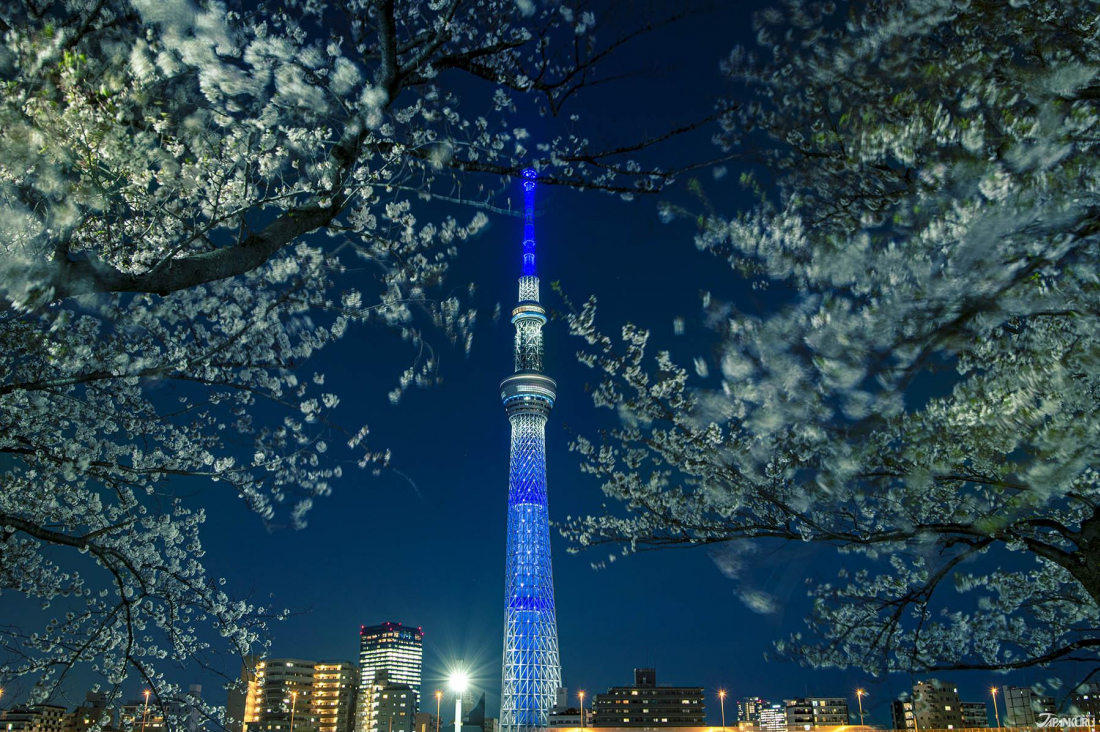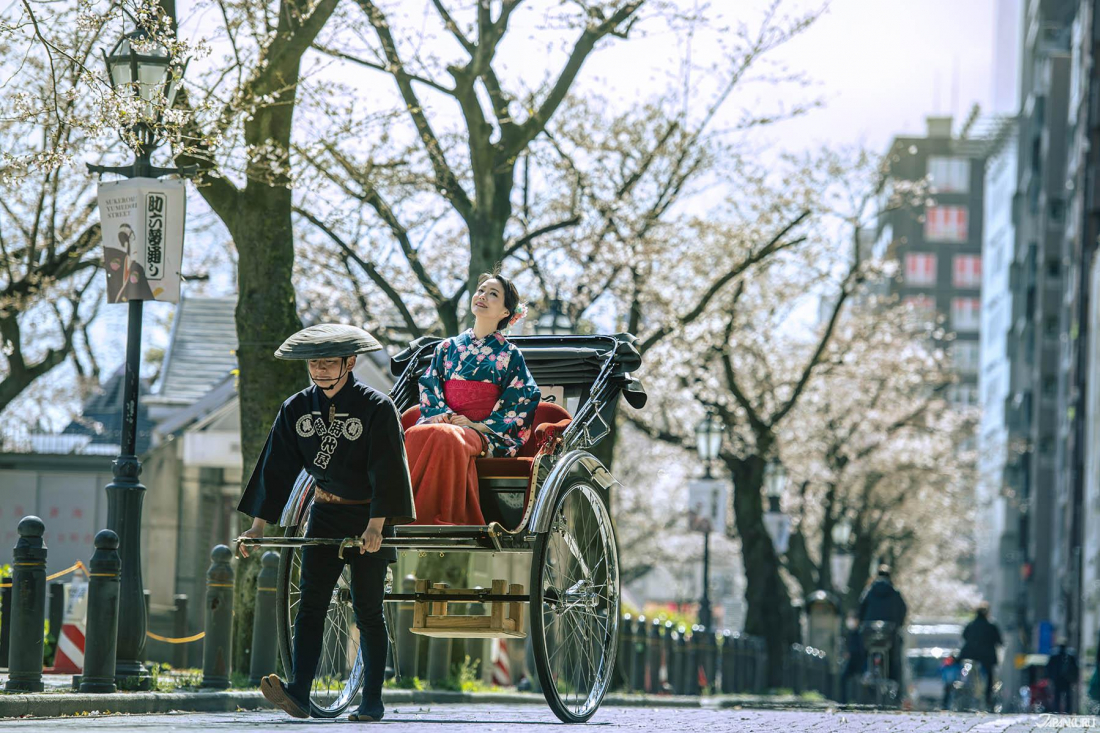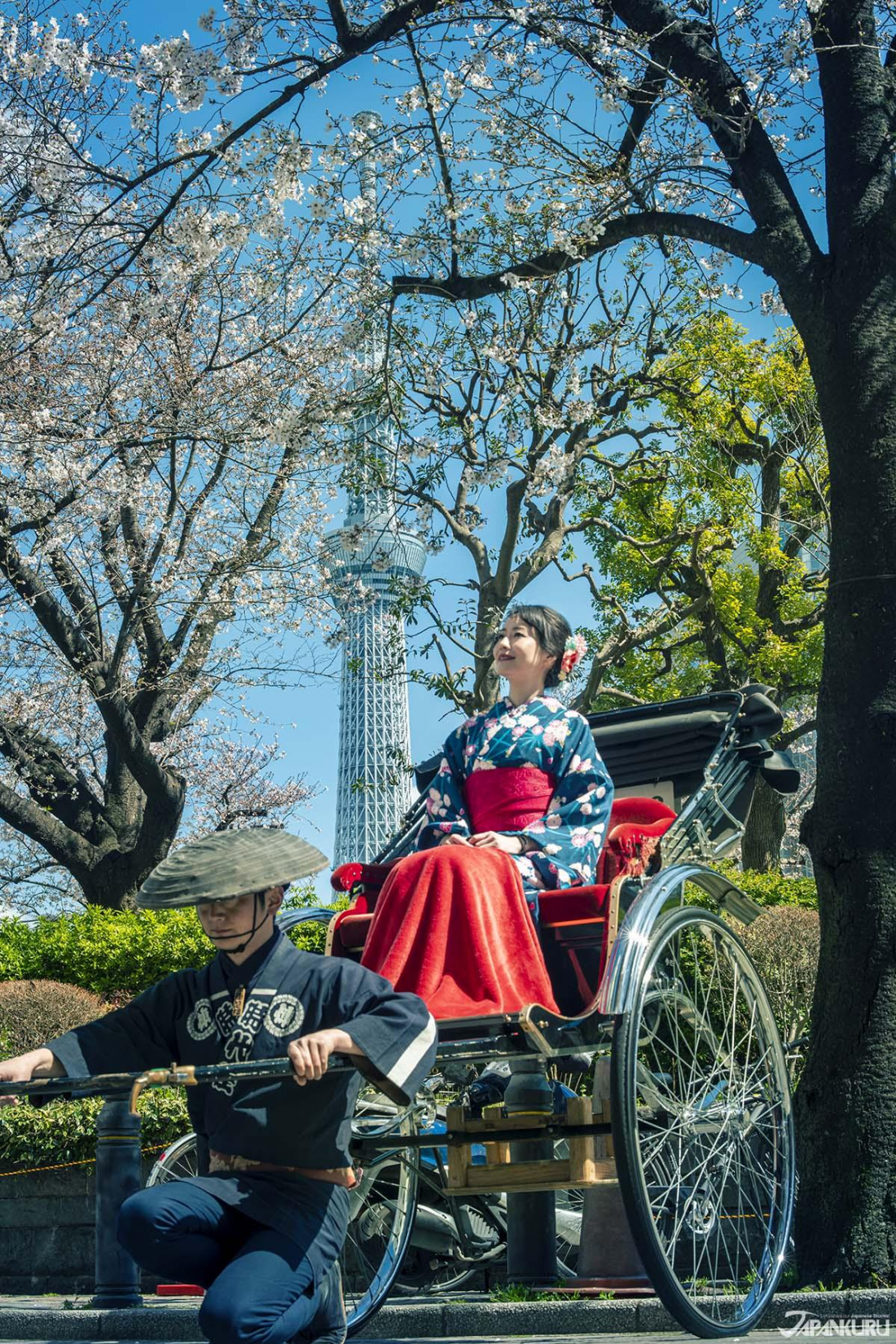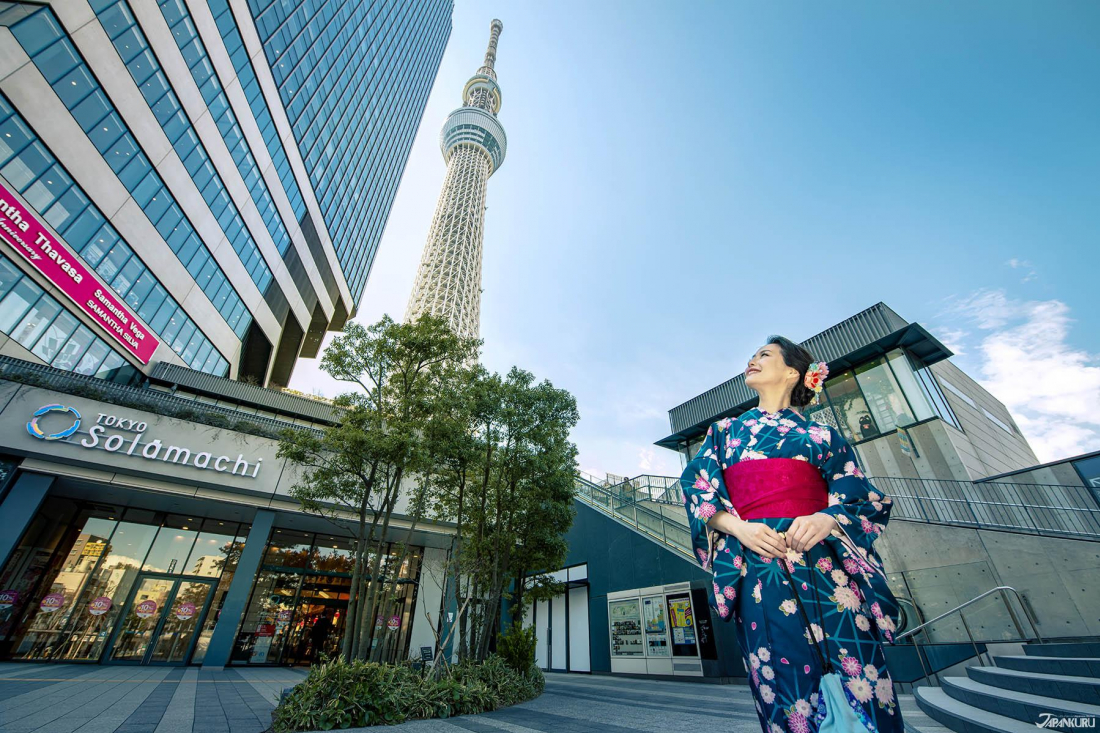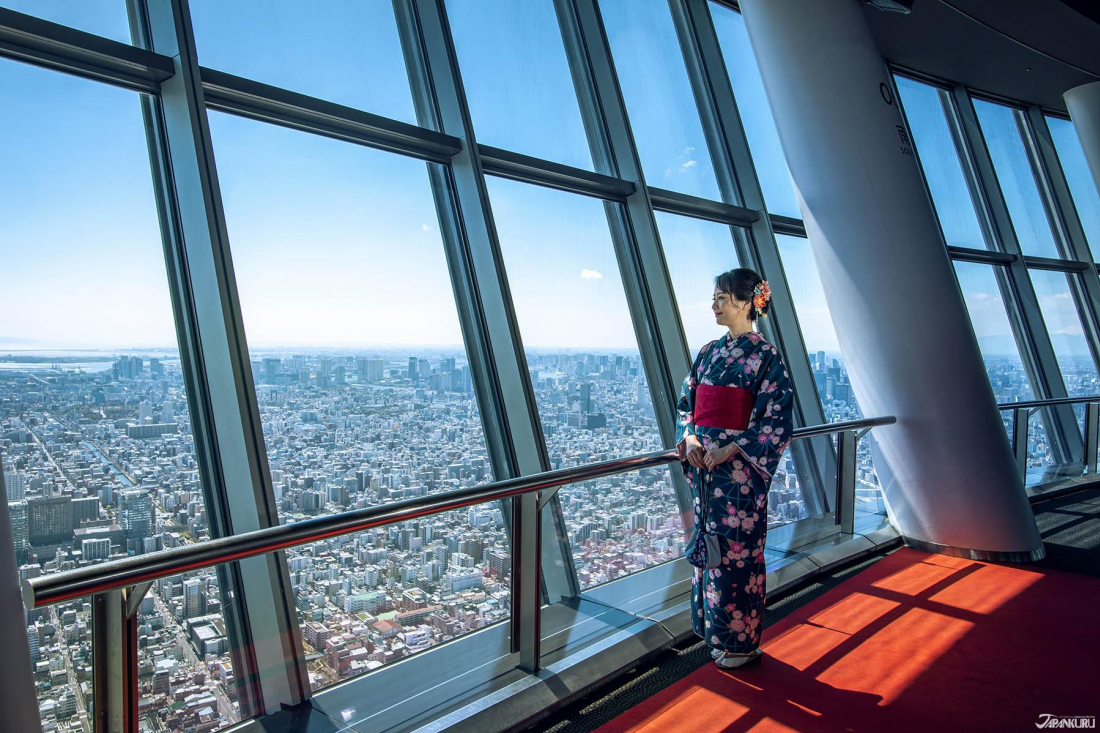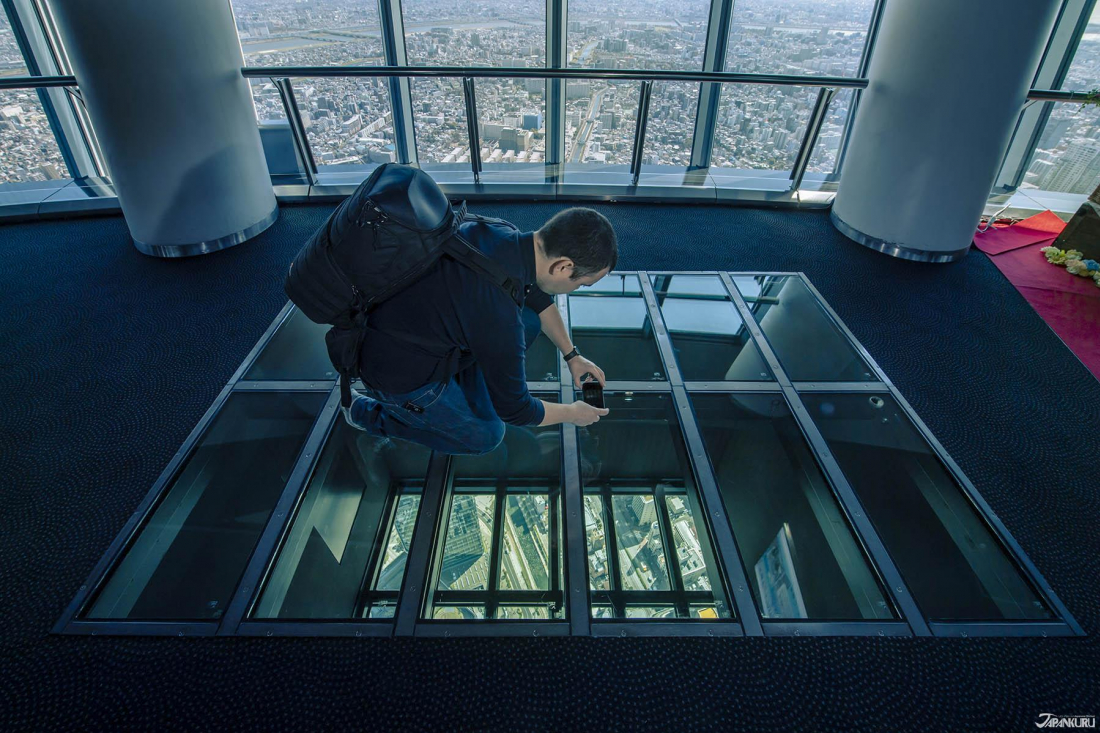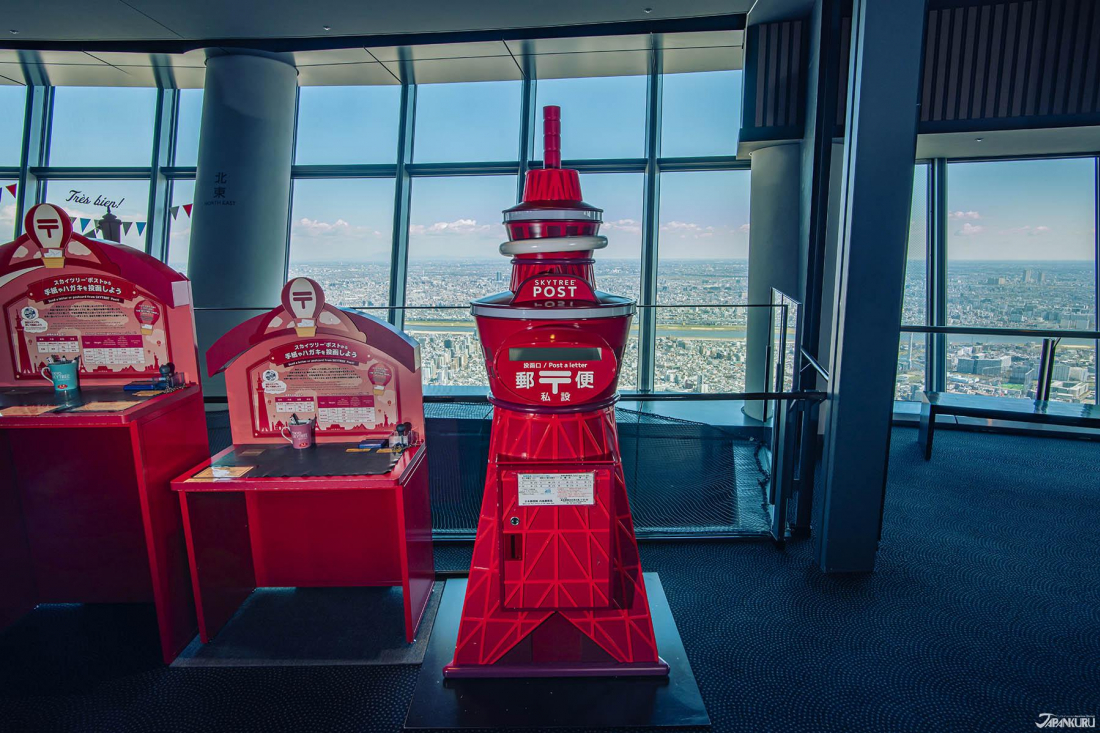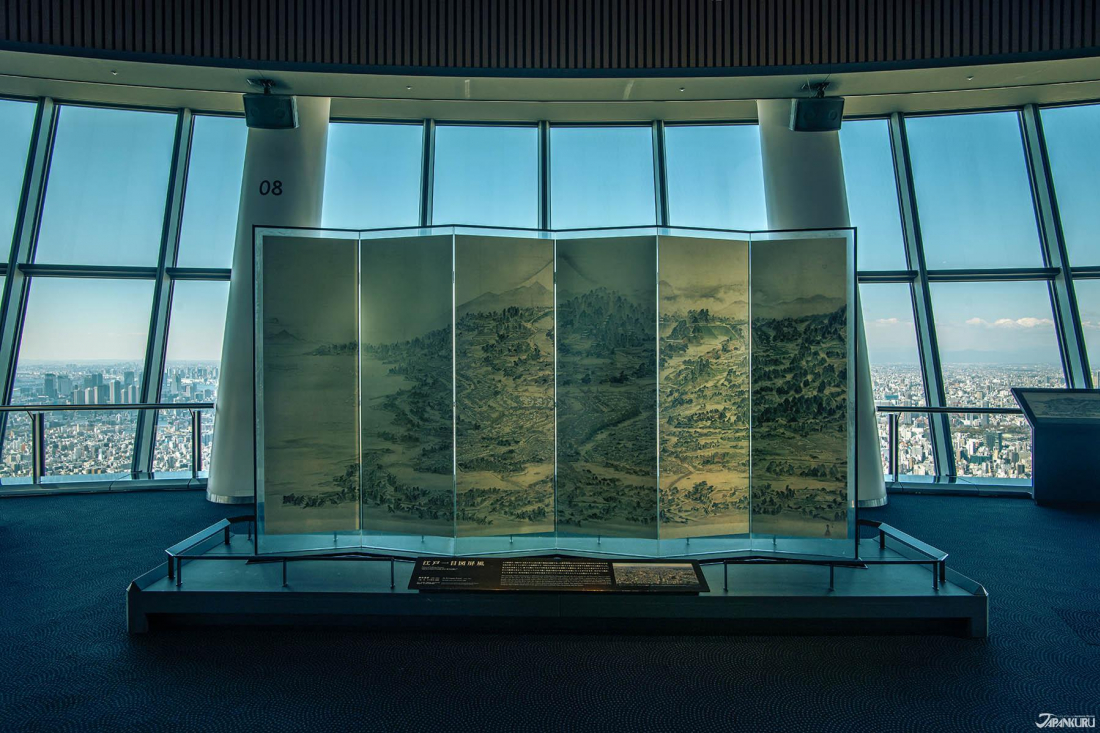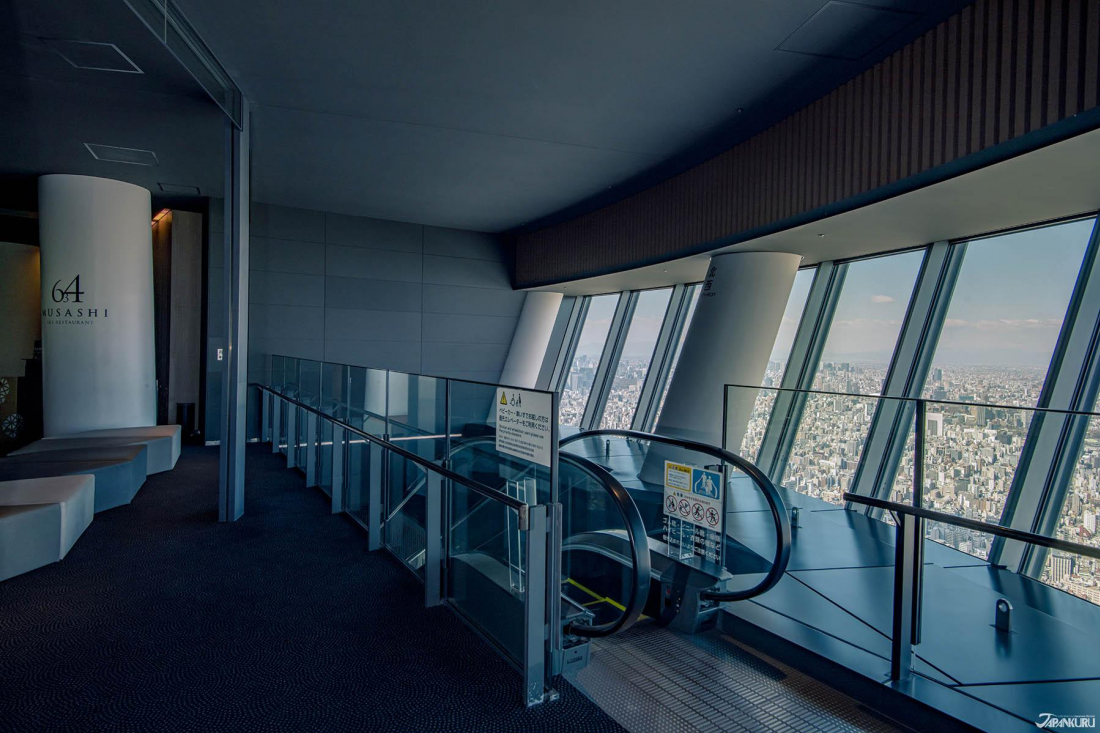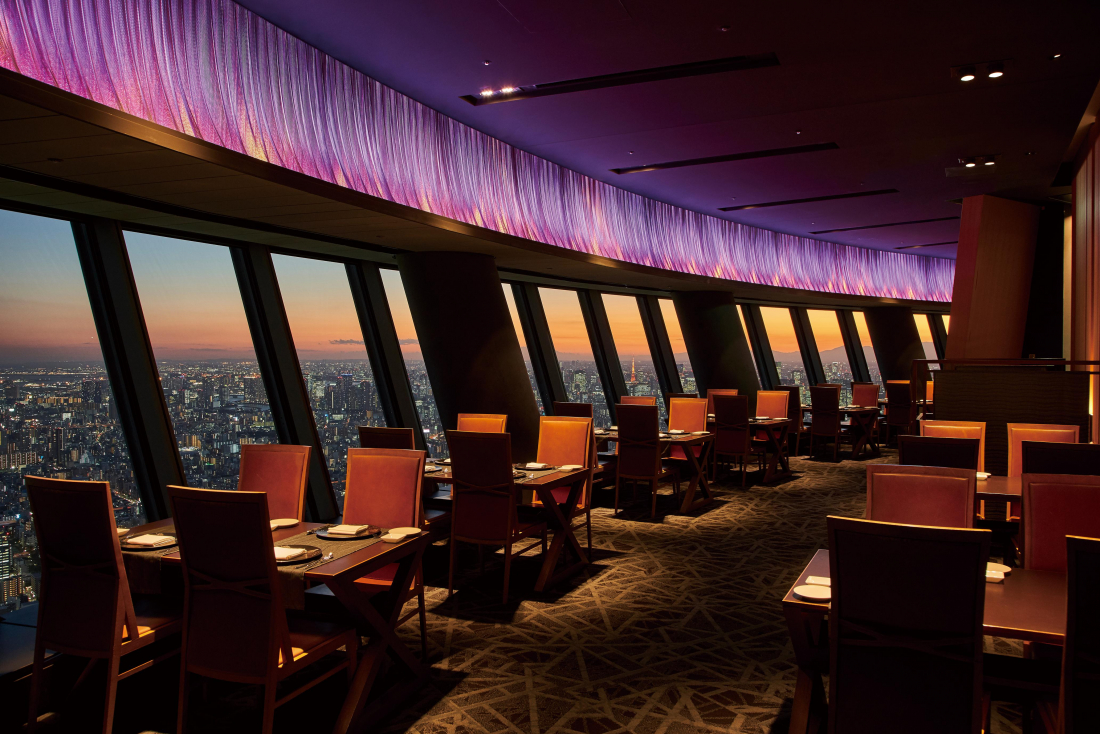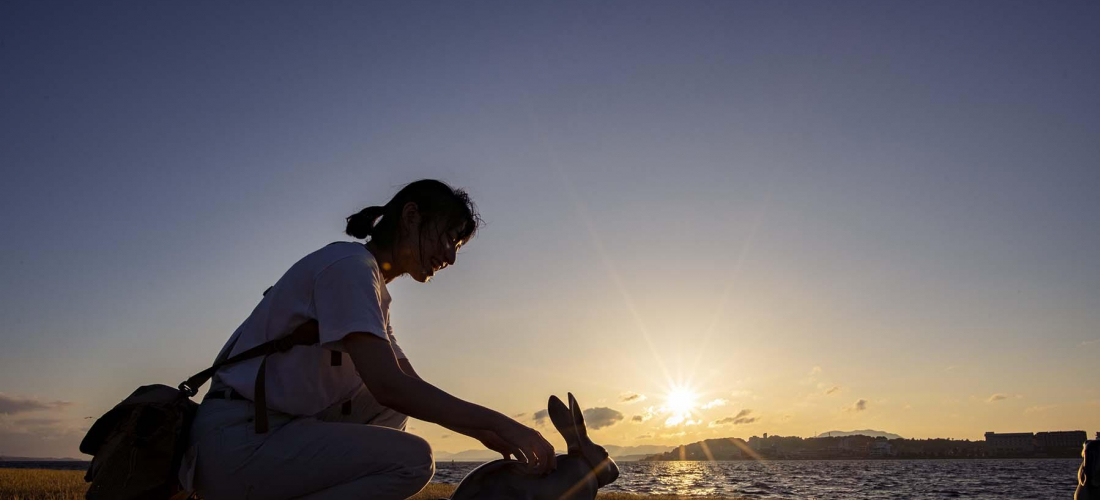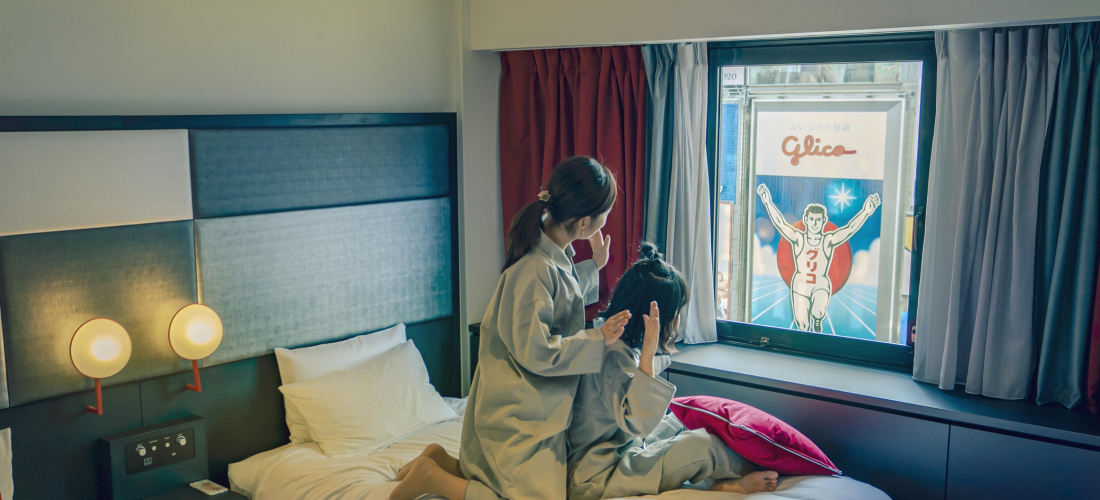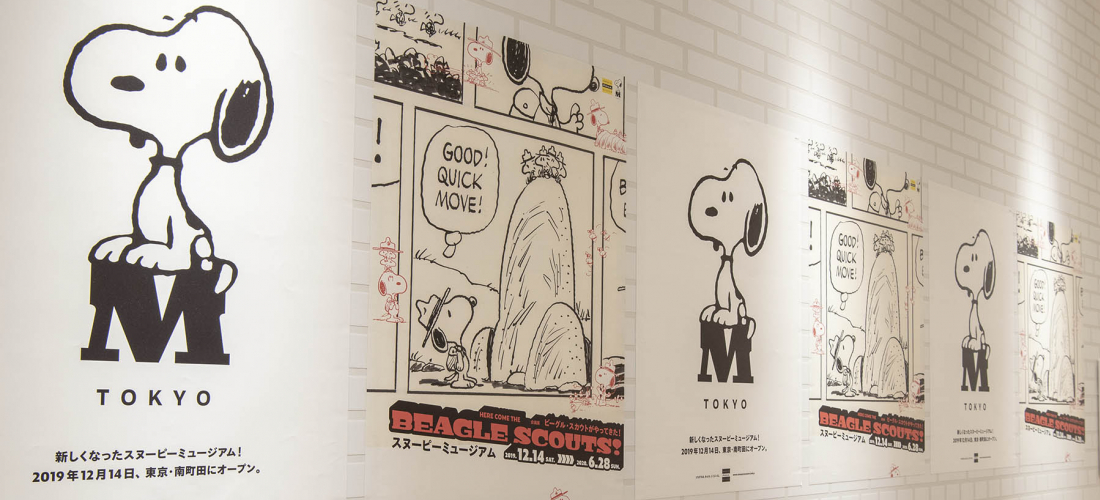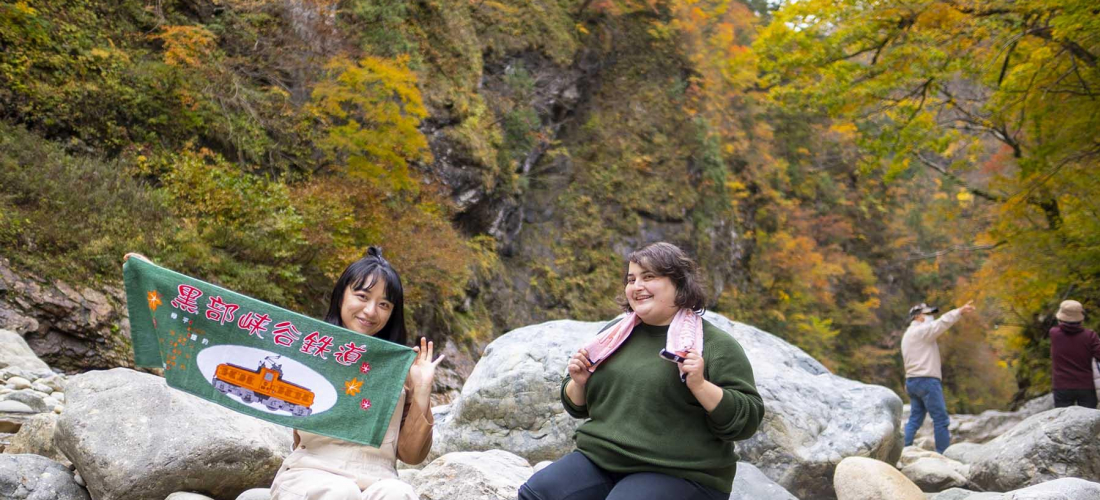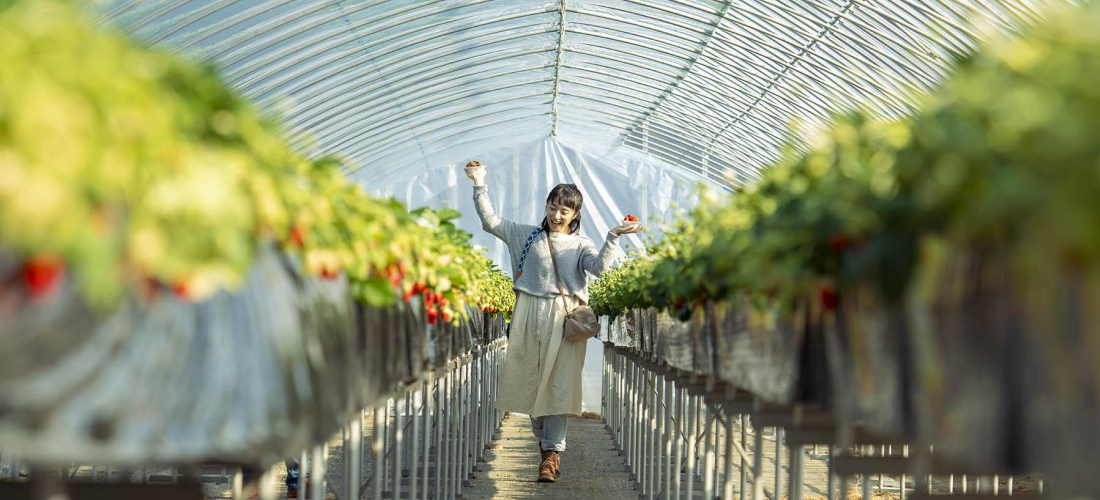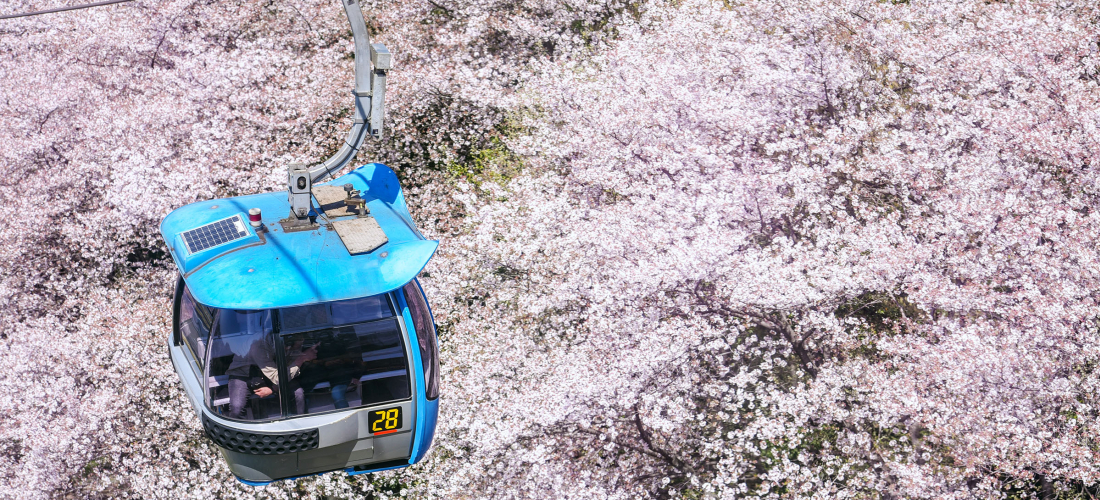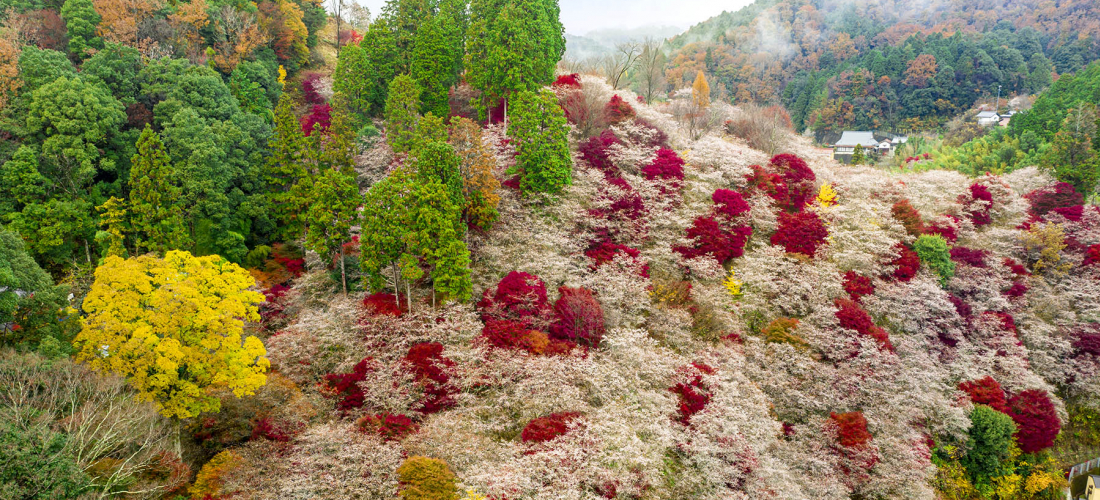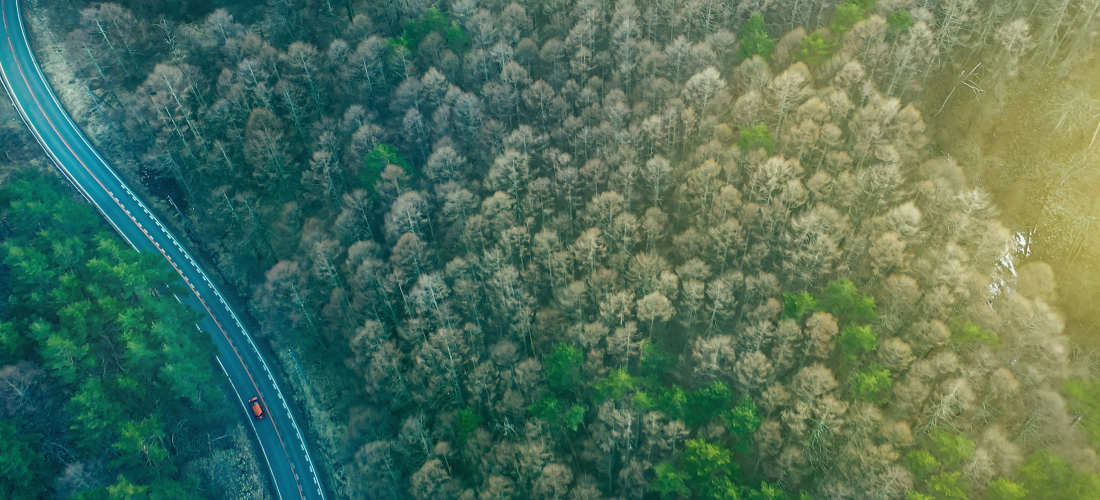
CONTENTS
La TOKYO SKYTREE est un incontournable de Tokyo toute l’année, mais les sakura (cerisiers japonais) transforme la TOKYO SKYTREE en un lieu magique au printemps!
Les sakura printaniers et la TOKYO SKYTREE
Pour beaucoup de gens, la saison des sakura est le meilleur moment pour voir Tokyo, alors qu'une brise de printemps traverse la ville, emportant avec elle des vagues de pétales de fleurs de cerisier roses. Et comme le printemps apporte du beau temps et de belles fleurs de sakura dans la ville, c'est le moment idéal pour découvrir les attractions les plus populaires de Tokyo, comme TOKYO SKYTREE! Cette magnifique tour s'élève à 634 mètres (plus de 2080 pieds) au-dessus de Tokyo, c'est pourquoi c'est une étape touristique incontournable sur tout itinéraire de voyage au Japon. Une journée passée à explorer l'est de Tokyo, à admirer la sakura locale et à visiter TOKYO SKYTREE pourrait bien être la meilleure partie de votre voyage.
1-1-2 Oshiage, Sumida-ku, Tokyo
Accès: Gare de Tokyo Skytree (Ligne Tobu Skytree) / Gare de Oshiage (Ligne Hanzomon)
Horaires : 8:00 – 22:00 (dernière entrée: 21:00)
Tarifs / Réservation des Tickets
Official Website (en)
Commencez la journée à Asakusa
Non seulement le quartier d'Asakusa de Tokyo est l'un des endroits les plus populaires pour les voyageurs, mais c'est aussi une magnifique partie de la ville, c'est pourquoi c'est un bon endroit pour commencer la journée. Pour rendre cette sortie encore plus amusante, vous pouvez même louer un kimono dans l'un des nombreux magasins autour d'Asakusa et flâner dans Tokyo avec style! Que vous portiez un kimono, ou que vous décidiez simplement de vous en tenir à vos petits gestes de tous les jours, vous allez être époustouflé par les vues de TOKYO SKYTREE de l'autre côté de la rivière Sumida.
La vue de loin
Rendez-vous sur les rives de la rivière Sumida et vous serez récompensé par des rangées de cerisiers en fleurs, encadrant avec élégance la forme imposante de la TOKYO SKYTREE. De cette distance, vous pouvez vraiment apprécier la hauteur de la structure, et la lumière du soleil qui scintille sur les côtés rivalise presque avec le rose des sakura.
Une fois que vous aurez vraiment profité de la vue, vous voudrez certainement voir à quoi cela ressemble depuis plusieurs centaines de mètres dans le ciel. Il est temps d'aller à la TOKYO SKYTREE! Pour avoir la chance de découvrir un peu de la culture japonaise traditionnelle sur le chemin, le moyen le plus excitant pour se rendre à TOKYO SKYTREE est le pousse-pousse! Saviez-vous que c'est un moyen de transport populaire depuis les années 1800, donc une balade à bord d'un pousse-pousse est une expérience japonaise très traditionnelle! (Bien que TOKYO SKYTREE, construit en 2008 ~ 2012, ne soit certainement pas un point de repère que les Tokyoïtes du 19e siècle auraient reconnu!)
Les différents moyens d’apprécier la TOKYO SKYTREE
Au sol sur Sorami-zaka
Que vous arriviez à la TOKYO SKYTREE en pousse-pousse, ou tout simplement dans l'une des gares à proximité (Tokyo Skytree Station ou Oshiage Station), lorsque vos pieds toucheront le sol, votre première vue sera d'en bas. Pour ceux qui cherchent à prendre un instantané avec la tour qui semble toucher le ciel derrière elle, la zone de Sorami-Zaka à la base de la TOKYO SKYTREE vous offre cette opportunité.
De plus, c'est maintenant votre chance de voir de près que la structure n'est pas peinte avec une simple peinture blanche. La couleur, nommée "Skytree White", est en fait un mélange spécial, à base de colorants indigo traditionnels japonais (aizome, 藍 染).
Les tickets pour la TOKYO SKYTREE
Il est enfin temps de grimper les centaines de mètres grâce aux ascenseurs de la TOKYO SKYTREE! Mais vous aurez d'abord besoin d'un ticket. Vous pouvez certainement faire la queue chaque fois que vous arrivez et acheter un billet d'une journée sur place, mais les files d'attente peuvent être longues les jours de grande affluence, et il y a de bien meilleures options! Si vous ne voulez pas perdre de temps à faire la queue dans le hall, vous pouvez acheter des billets pour TOKYO SKYTREE avant même d'arriver au Japon. Les billets sont disponibles auprès d'un certain nombre d'agences de voyages (comme celui-ci ici). Donc, bien que vous puissiez certainement vérifier les prix des billets le jour même, vous aurez plus de temps pour vous détendre et profiter de la vue si vous vous présentez avec un billet en main.
Vous ne connaissez pas les différents tarifs? Pour expliquer un peu, la TOKYO SKYTREE a deux étages de terrasse d'observation, la terrasse Tembo (350e étage) et la galerie Tembo (450e étage). Il est possible d'acheter un billet uniquement pour le pont Tembo (et la vue depuis le 350ème étage est déjà incroyable), mais le 450ème étage Tembo Galleria offre les vues aériennes les plus spectaculaires de Tokyo, cela vaut donc la peine d'aller jusqu'au sommet. Si vous souhaitez acheter un billet pour la galerie Tembo, vous pouvez l'acheter au niveau du pont Tembo!
Au sommet
Au printemps, vous pourrez même profiter des sakura lors de votre périple en grimpant au sommet de la TOKYO SKYTREE, grâce à un motif de fleur de cerisier décorant subtilement les ascenseurs! Mais dès que vous sortirez des portes de l'ascenseur, vous ne réfléchirez plus aux décorations murales. Avec la métropole à couper le souffle de Tokyo étalée en dessous de vous, vos yeux seront collés aux nombreuses fenêtres!
Tous les visiteurs qui se rendent aux étages du pont d'observation de TOKYO SKYTREE s'arrêtent au pont Tembo. Si vous avez un billet (ou choisissez d'en acheter un) pour la Tembo Galleria, l'étage d'observation le plus élevé, vous prendrez un ascenseur séparé sur les 100 mètres supplémentaires. Bien que vous puissiez passer autant de temps que vous le souhaitez sur l'un des ponts d'observation, les billets pour les deux étages ne sont valables que pour un trajet dans l'ascenseur chacun, alors ne redescendez pas sur le pont Tembo avant d'avoir vu tout ce qu'il y avait à voir au 450e étage, et ne descendez pas au niveau du sol tant que vous n'avez pas terminé!
Les meilleurs vues des différents ponts d’observation
Une fois que vous atteignez le sommet de l'ascenseur et sortez sur le pont Tembo, fermez les yeux un instant – vous ressentez quelque chose? C'est presque imperceptible, mais la hauteur de la TOKYO SKYTREE signifie que les sections supérieures se déplacent constamment dans le vent! Ouvrez les yeux, il est enfin temps d'explorer toutes les vues possibles.
Mt. Fuji est un symbole du Japon et la TOKYO SKYTREE offre la meilleure vue sur la majestueuse montagne de Tokyo. Il suffit de le regarder se profiler en arrière-plan! Les panneaux sur les ponts d'observation indiquent certains des points de repère les plus intéressants.
Lieu: aux 350e et 450e étages.
Pour tous ceux qui ont un peu de courage, le sol en verre vaut le détour! La vue imprenable sur la rue 350 mètres plus bas pourrait bien faire battre votre cœur, et vous pouvez prendre une photo unique lorsque vous vous tenez sur la vitre.
Lieu: pont tembo (340e étage)
Procurez-vous une carte postale dans la boutique de cadeaux à proximité et vous pouvez la faire envoyer directement du haut de TOKYO SKYTREE, via cette boîte aux lettres unique! Il arrivera à destination avec un cachet spécial indiquant d'où il a été envoyé.
Lieu: Pont tembo (345e étage)
Voyez-vous la ressemblance? Ce magnifique paravent pliant représentant la région de Tokyo a été peint pendant la période Edo au Japon, et ils l'ont maintenant affiché afin que vous puissiez comparer la réalité d'aujourd'hui à la façon dont les gens voyaient la ville.
Lieu: pont Tembo (350e étage)
Si vous vous y rendez pendant la journée, vous pourrez admirer cette vue imprenable sur l'ombre de TOKYO SKYTREE qui tombe sur le paysage de la ville. Ici, vous le voyez pointer vers l'ouest, vers le reste de Tokyo!
Lieu: aux 350e et 450e étages
Le point culminant de la tour sera-t-il le point culminant de votre journée? Le "Sorakara Point" (nommé d'après la mignonne mascotte de TOKYO SKYTREE) est le point d'observation le plus élevé de TOKYO SKYTREE. Depuis Tokyo, cela ressemble moins à une immense métropole qu'à un ensemble de jouets pour enfants! Vous ne trouverez nulle part ailleurs une vue comme celle-ci.
Lieu: Tembo Galleria (450e étage)
Se relaxer le soir
Sky Restaurant 634
Vous n'êtes pas encore prêt.e.s à redescendre sur le plancher des vaches?
*la photo est une illustration.
Pour un peu de temps supplémentaire la tête dans les nuages, vous pouvez toujours réserver à l'avance au Sky Restaurant 634, où les convives mangent à 345 mètres au-dessus du sol. Chaque table a une vue panoramique sur la ville en dessous, ce qui en fait un repas magique.
Sky Restaurant 634
Horaires: 11:00 – 23:00 (dernières commande 20:30)
Official Website
Sous la TOKYO SKYTREE
Une fois que vous vous dirigez enfin vers l'ascenseur au 340e étage et descendez de la tour, il existe de nombreuses façons de terminer votre journée de la TOKYO SKYTREE avec style. Les centres commerciaux environnants contiennent de nombreux restaurants, y compris des spécialités japonaises, et pendant la saison des sakura, vous pouvez acheter des produits à la fleur de cerisier de toutes sortes! Apportez un peu de beauté printanière Tokyoïte chez vous, si vous le souhaitez, avec des bonbons sakura, des accessoires de fleurs de cerisier ou un sac fourre-tout rose très pratique.
TOKYO Solamachi Shopping Facilities
Horaires: 10:00 – 21:00
Horaires du Restaurant: 11:00 – 23:00
Official Website (en)
©TOKYO-SKYTREE
Avant de partir, récupérez un ou deux souvenirs dans la boutique du rez-de-chaussée!
Illuminations nocturnes de la TOKYO SKYTREE
Que vous l'admiriez de près ou que vous regardiez de loin sur le chemin du retour, ne manquez certainement pas la chance de voir TOKYO SKYTREE s'illuminer une fois le soleil couché! Il existe trois couleurs et motifs standard qui éclairent la nuit, appelés Iki, Miyabi et Nobori, mais à certaines occasions, vous pourriez avoir la chance d'attraper un motif d'éclairage spécial à la place (comme celui illustré ici). (Les lumières sont également toutes des LED écologiques!)
Que TOKYO SKYTREE soit bleu, violet, orange ou toute autre couleur du spectre, l'image du bâtiment encadrée de fleurs de cerisier printanières est quelque chose que vous n'oublierez jamais.
Bonne nuit, TOKYO SKYTREE!
Commencer la journée avec un kimono à Asakusa, admirer la vue des cerisiers en fleurs au premier plan et TOKYO SKYTREE au loin, escalader la haute tour et admirer la vue imprenable, avant de terminer l'excursion avec un bon repas et un peu de spectacle de lumière – vous ne trouverez pas de meilleures choses à faire à Tokyo!
Details
NAME:TOKYO SKYTREE
MAP
ACCESS:Tokyo Skytree Station / Oshiage Station
COMMENT
FEATURED MEDIA
VIEW MORE 
A New Tokyo Animal Destination: Relax & Learn About the World’s Animals in Japan
#pr #japankuru #anitouch #anitouchtokyodome #capybara #capybaracafe #animalcafe #tokyotrip #japantrip #카피바라 #애니터치 #아이와가볼만한곳 #도쿄여행 #가족여행 #東京旅遊 #東京親子景點 #日本動物互動體驗 #水豚泡澡 #東京巨蛋城 #เที่ยวญี่ปุ่น2025 #ที่เที่ยวครอบครัว #สวนสัตว์ในร่ม #TokyoDomeCity #anitouchtokyodome

Shohei Ohtani Collab Developed Products & Other Japanese Drugstore Recommendations From Kowa
#pr #japankuru
#kowa #syncronkowa #japanshopping #preworkout #postworkout #tokyoshopping #japantrip #일본쇼핑 #일본이온음료 #오타니 #오타니쇼헤이 #코와 #興和 #日本必買 #日本旅遊 #運動補充能量 #運動飲品 #ช้อปปิ้งญี่ปุ่น #เครื่องดื่มออกกำลังกาย #นักกีฬา #ผลิตภัณฑ์ญี่ปุ่น #อาหารเสริมญี่ปุ่น

도쿄 근교 당일치기 여행 추천! 작은 에도라 불리는 ‘가와고에’
세이부 ‘가와고에 패스(디지털)’ 하나면 편리하게 이동 + 가성비까지 완벽하게! 필름카메라 감성 가득한 레트로 거리 길거리 먹방부터 귀여움 끝판왕 핫플&포토 스폿까지 총집합!
Looking for day trips from Tokyo? Try Kawagoe, AKA Little Edo!
Use the SEIBU KAWAGOE PASS (Digital) for easy, affordable transportation!
Check out the historic streets of Kawagoe for some great street food and plenty of picturesque retro photo ops.
#pr #japankuru #도쿄근교여행 #가와고에 #가와고에패스 #세이부패스 #기모노체험 #가와고에여행 #도쿄여행코스 #도쿄근교당일치기 #세이부가와고에패스
#tokyotrip #kawagoe #tokyodaytrip #seibukawagoepass #kimono #japantrip

Hirakata Park, Osaka: Enjoy the Classic Japanese Theme Park Experience!
#pr #japankuru #hirakatapark #amusementpark #japantrip #osakatrip #familytrip #rollercoaster #retrôvibes #枚方公園 #大阪旅遊 #關西私房景點 #日本親子旅行 #日本遊樂園 #木造雲霄飛車 #히라카타파크 #สวนสนุกฮิราคาตะพาร์ค

🍵Love Matcha? Upgrade Your Matcha Experience With Tsujiri!
・160년 전통 일본 말차 브랜드 츠지리에서 말차 덕후들이 픽한 인기템만 골라봤어요
・抹茶控的天堂!甜點、餅乾、飲品一次滿足,連伴手禮都幫你列好清單了
・ส่องมัทฉะสุดฮิต พร้อมพาเที่ยวร้านดังในอุจิ เกียวโต
#pr #japankuru #matcha #matchalover #uji #kyoto #japantrip #ujimatcha #matchalatte #matchasweets #tsujiri #말차 #말차덕후 #츠지리 #교토여행 #말차라떼 #辻利抹茶 #抹茶控 #日本抹茶 #宇治 #宇治抹茶 #日本伴手禮 #抹茶拿鐵 #抹茶甜點 #มัทฉะ #ของฝากญี่ปุ่น #ชาเขียวญี่ปุ่น #ซึจิริ #เกียวโต

・What Is Nenaito? And How Does This Sleep Care Supplement Work?
・你的睡眠保健品——認識「睡眠茶氨酸錠」
・수면 케어 서플리먼트 ‘네나이토’란?
・ผลิตภัณฑ์เสริมอาหารดูแลการนอน “Nenaito(ネナイト)” คืออะไร?
#pr #japankuru #sleepcare #japanshopping #nenaito #sleepsupplement #asahi #睡眠茶氨酸錠 #睡眠保健 #朝日 #l茶胺酸 #日本藥妝 #日本必買 #일본쇼핑 #수면 #건강하자 #네나이토 #일본영양제 #อาหารเสริมญี่ปุ่น #ช้อปปิ้งญี่ปุ่น #ร้านขายยาญี่ปุ่น #ดูแลตัวเองก่อนนอน #อาซาฮิ

Japanese Drugstore Must-Buys! Essential Items from Hisamitsu® Pharmaceutical
#PR #japankuru #hisamitsu #salonpas #feitas #hisamitsupharmaceutical #japanshopping #tokyoshopping #traveltips #japanhaul #japantrip #japantravel

Whether you grew up with Dragon Ball or you just fell in love with Dragon Ball DAIMA, you'll like the newest JINS collab. Shop this limited-edition Dragon Ball accessory collection to find some of the best Dragon Ball merchandise in Japan!
>> Find out more at Japankuru.com! (link in bio)
#japankuru #dragonball #dragonballdaima #animecollab #japanshopping #jins #japaneseglasses #japantravel #animemerch #pr

This month, Japankuru teamed up with @official_korekoko to invite three influencers (originally from Thailand, China, and Taiwan) on a trip to Yokohama. Check out the article (in Chinese) on Japankuru.com for all of their travel tips and photography hints - and look forward to more cool collaborations coming soon!
【橫濱夜散策 x 教你怎麼拍出網美照 📸✨】
每次來日本玩,是不是都會先找旅日網紅的推薦清單?
這次,我們邀請擁有日本豐富旅遊經驗的🇹🇭泰國、🇨🇳中國、🇹🇼台灣網紅,帶你走進夜晚的橫濱!從玩樂路線到拍照技巧,教你怎麼拍出最美的夜景照。那些熟悉的景點,換個視角說不定會有新發現~快跟他們一起出發吧!
#japankuru #橫濱紅磚倉庫 #汽車道 #中華街 #yokohama #japankuru #橫濱紅磚倉庫 #汽車道 #中華街 #yokohama #yokohamaredbrickwarehouse #yokohamachinatown

If you’re a fan of Vivienne Westwood's Japanese designs, and you’re looking forward to shopping in Harajuku this summer, we’ve got important news for you. Vivienne Westwood RED LABEL Laforet Harajuku is now closed for renovations - but the grand reopening is scheduled for July!
>> Find out more at Japankuru.com! (link in bio)
#japankuru #viviennewestwood #harajuku #omotesando #viviennewestwoodredlabel #viviennewestwoodjapan #비비안웨스트우드 #오모테산도 #하라주쿠 #日本購物 #薇薇安魏斯伍德 #日本時尚 #原宿 #表參道 #japantrip #japanshopping #pr

Ready to see TeamLab in Kyoto!? At TeamLab Biovortex Kyoto, the collective is taking their acclaimed immersive art and bringing it to Japan's ancient capital. We can't wait to see it for ourselves this autumn!
>> Find out more at Japankuru.com! (link in bio)
#japankuru #teamlab #teamlabbiovortex #kyoto #kyototrip #japantravel #artnews
Photos courtesy of teamLab, Exhibition view of teamLab Biovortex Kyoto, 2025, Kyoto ® teamLab, courtesy Pace Gallery

Japanese Makeup Shopping • A Trip to Kamakura & Enoshima With Canmake’s Cool-Toned Summer Makeup
#pr #canmake #enoshima #enoden #에노시마 #캔메이크 #japanesemakeup #japanesecosmetics

⚔️The Robot Restaurant is gone, but the Samurai Restaurant is here to take its place. Check it out, and don't forget your coupon!
🍣신주쿠의 명소 로봇 레스토랑이 사무라이 레스토랑으로 부활! 절찬 쿠폰 발급중
💃18歲以上才能入場的歌舞秀,和你想的不一樣!拿好優惠券去看看~
#tokyo #shinjuku #samurairestaurant #robotrestaurant #tokyotrip #도쿄여행 #신주쿠 #사무라이레스토랑 #이색체험 #할인이벤트 #歌舞伎町 #東京景點 #武士餐廳 #日本表演 #日本文化體驗 #japankuru #japantrip #japantravel #japanlovers #japan_of_insta

Japanese appliance & electronics shopping with our KOJIMA x BicCamera coupon!
用JAPANKURU的KOJIMA x BicCamera優惠券買這些正好❤️
코지마 x 빅 카메라 쿠폰으로 일본 가전 제품 쇼핑하기
#pr #japankuru #japanshopping #kojima #biccamera #japaneseskincare #yaman #dji #osmopocket3 #skincaredevice #日本購物 #美容儀 #相機 #雅萌 #日本家電 #일본여행 #면세 #여행꿀팁 #일본쇼핑리스트 #쿠폰 #일본쇼핑 #일본브랜드 #할인 #코지마 #빅카메라 #japankurucoupon

